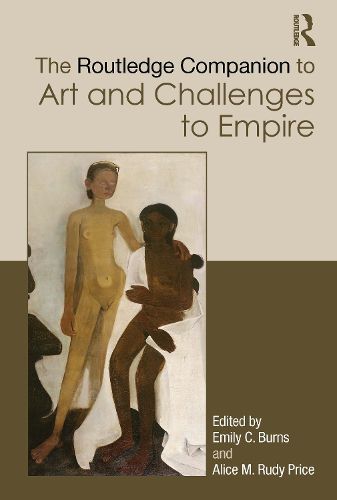Readings Newsletter
Become a Readings Member to make your shopping experience even easier.
Sign in or sign up for free!
You’re not far away from qualifying for FREE standard shipping within Australia
You’ve qualified for FREE standard shipping within Australia
The cart is loading…






This companion analyzes interactions between the arts and global imperial relationships from around 1800 through the 20th century.
By excavating layers and identifying legacies, the essays reveal inherent fractures in colonial perspectives. Tremendous multi-directional imperialisms and inter-imperial dialogues characterize the period, as do protests and anticolonial activity. How does the materializing of empire expose its logics of cultural superiority and its fault lines and instabilities? The essays in this volume explore how the arts, visual, and material culture, however subtly, tested empire's hegemonic limits, whether by exposing fragilities, unmasking ruptures, or through intentional subversions. While this volume's essays at times trace evidence of strident anticolonial voices, most consistently they show visual, textual, material, and performative practices pointing to the instability of imperial ambition and activity. The theme of geological stratification shapes the essay structure as authors consider the modes of artistic interaction in the context of imperialism as well as the legacies of empire.
The book will be of interest to graduate students, researchers, and professors and may be used in classes focused on art history, imperialism, and colonialism.
$9.00 standard shipping within Australia
FREE standard shipping within Australia for orders over $100.00
Express & International shipping calculated at checkout
This companion analyzes interactions between the arts and global imperial relationships from around 1800 through the 20th century.
By excavating layers and identifying legacies, the essays reveal inherent fractures in colonial perspectives. Tremendous multi-directional imperialisms and inter-imperial dialogues characterize the period, as do protests and anticolonial activity. How does the materializing of empire expose its logics of cultural superiority and its fault lines and instabilities? The essays in this volume explore how the arts, visual, and material culture, however subtly, tested empire's hegemonic limits, whether by exposing fragilities, unmasking ruptures, or through intentional subversions. While this volume's essays at times trace evidence of strident anticolonial voices, most consistently they show visual, textual, material, and performative practices pointing to the instability of imperial ambition and activity. The theme of geological stratification shapes the essay structure as authors consider the modes of artistic interaction in the context of imperialism as well as the legacies of empire.
The book will be of interest to graduate students, researchers, and professors and may be used in classes focused on art history, imperialism, and colonialism.